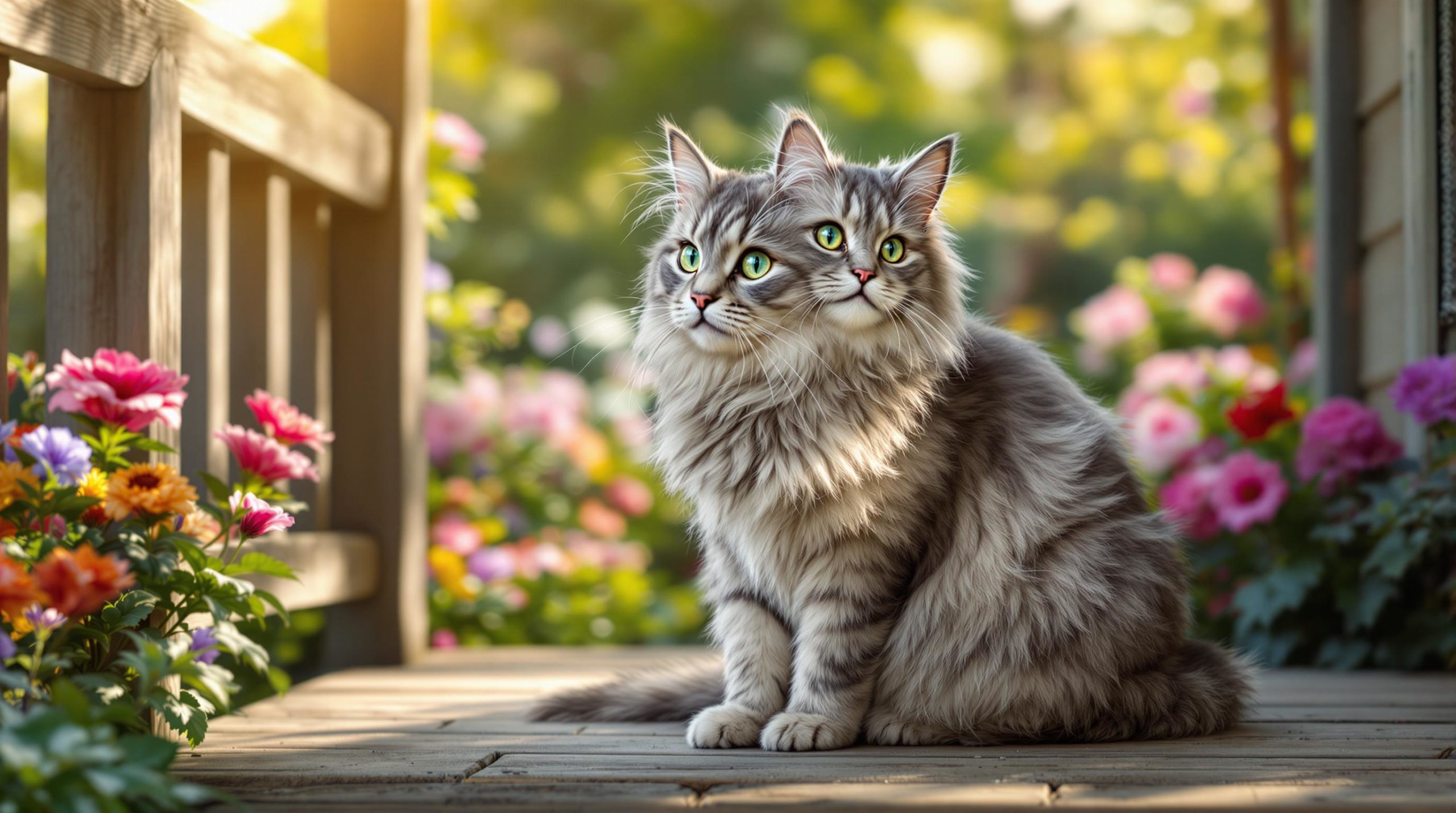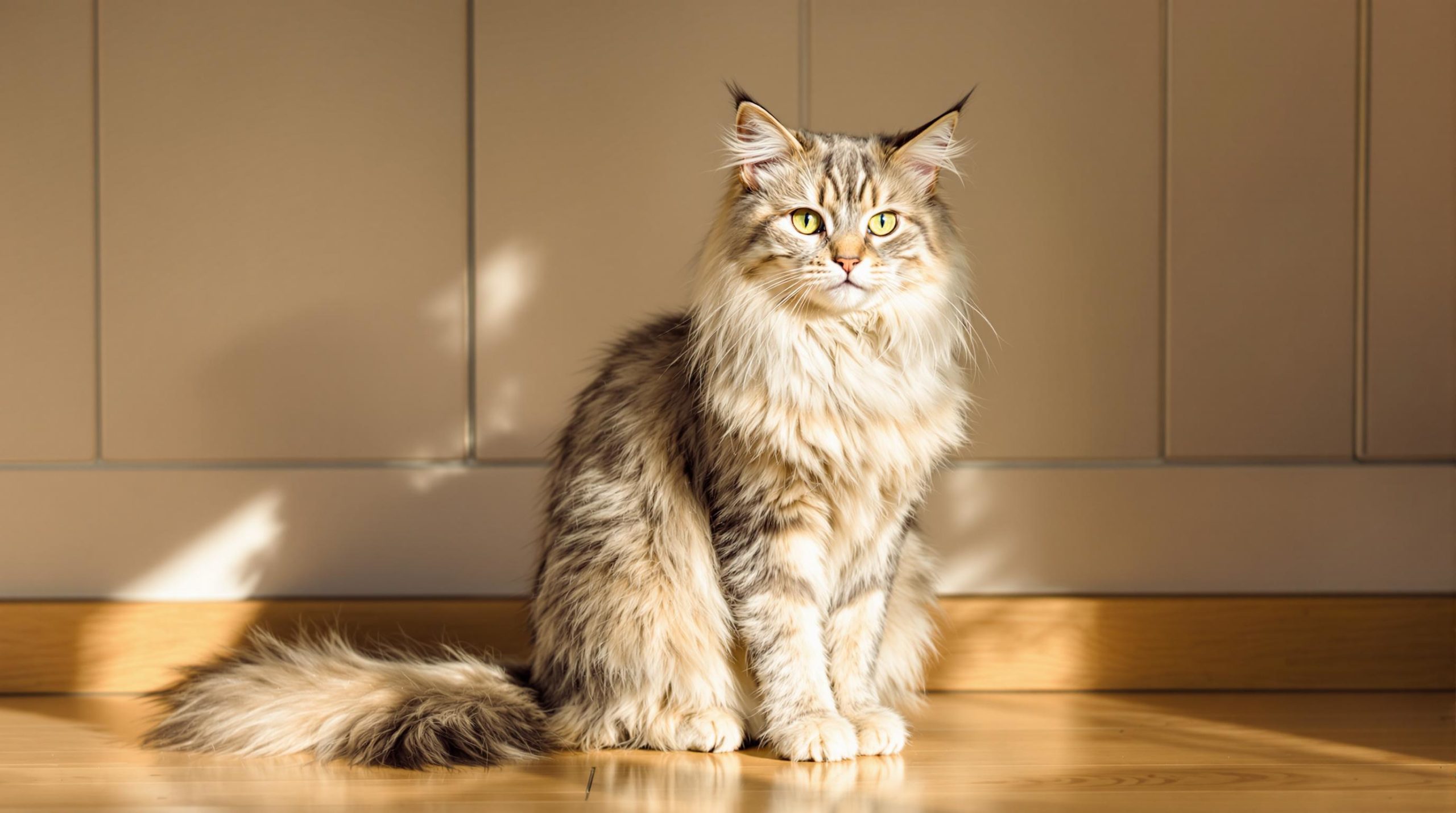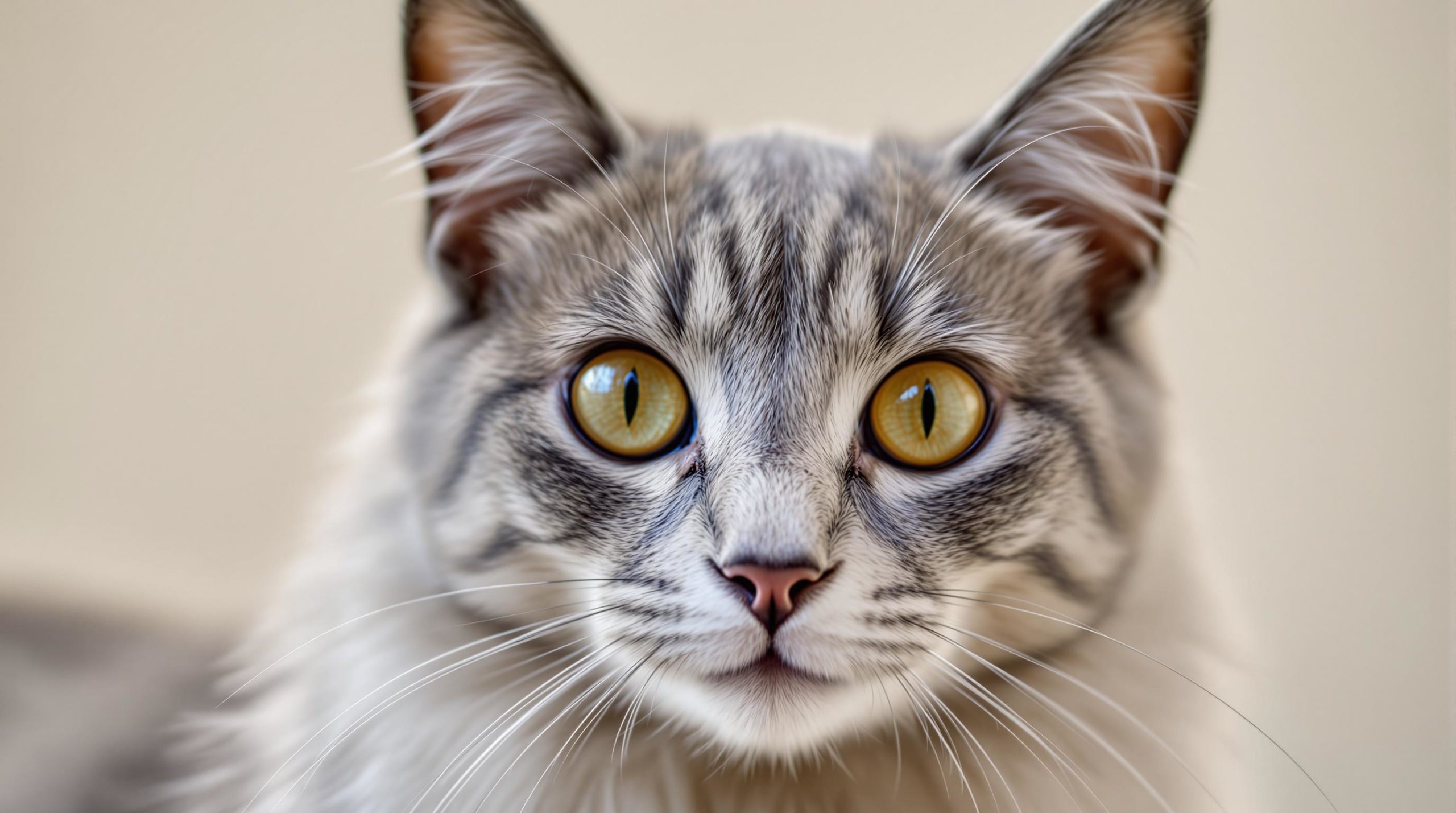Exploring the striking beauty of the silver Maine Coon cat

Few cat breeds boast as majestic a presence as the Silver Maine Coon, a feline that captivates enthusiasts with its shimmering coat and commanding stature. This unique variation combines the historic charm of Maine Coons with a striking silver hue that sets it apart in the feline kingdom. As the year 2025 unfolds, the fascination for silver-coated Maine Coons has only intensified, sparking curiosity about their genetics, personalities, and care needs.
Understanding the Genetics Behind the Silver Maine Coon’s Stunning Coat
The silver coloration of Maine Coons is far from accidental; it’s the result of a fascinating genetic dance primarily involving the Inhibitor gene (I). This dominant gene suppresses pigment at the root of each hair strand, creating an ethereal undercoat that appears silvery or white. The visible color remains at the hair tips, which can be black, blue, or red, and when combined with classic tabby patterns (T) or smoke effects, the result is a mesmerizing feline coat that seems to glow in natural light.
Many silver Maine Coons carry an additional dilution gene (d), which softens the traditional black shades into a delicate “blue” or steel tone of silver. This diversity in genetic combination explains the various striking silver coat types seen in Maine Coons today.
Breakdown of Common Silver Maine Coon Coat Types
| Type | Description | Visual Traits |
|---|---|---|
| Silver Tabby | Tabby stripes or marbled patterns on a shimmering silver base | Clear “M” forehead marking, intricate swirls and stripes |
| Shaded Silver | Darker tips of fur over a nearly white undercoat | Creates depth with soft gradation from tip to base |
| Smoke Silver | Solid-colored topcoat with bright white undercoat | Provides a smoky, mysterious appearance |
| Silver Tortie/Torbie | Color patches or tabby markings covering a silver background | Predominantly females, combining tortoise shell patterns over silver |
Such a range in coat patterns means that each Silver Maine Coon boasts a unique “signature” fur design. Observers often find themselves enthralled watching how sunlight plays off their coat, highlighting various shades and textures.
Why the Inhibitor Gene Matters in Cat Breeding
The Inhibitor gene operates not by creating color but by preventing pigment from settling at the hair’s root. Only a single copy of this dominant gene is sufficient to produce the characteristic silver sheen, making it a sought-after trait among breeders focused on producing striking silver Maine Coons.
- Prevents black or red pigments from coloring hair roots
- Preserves pigment only at hair tips
- Results in an undercoat that looks white or silvery
- Works in conjunction with tabby and dilution genes to enhance uniqueness
This genetic combination allows breeders to predict and nurture specific silver hues, thus maintaining the breed’s allure while respecting health and temperament standards.

The Majestic Physical Presence and Size of Silver Maine Coons
Silver Maine Coons are often described as “giants of the cat world,” with a reputation for their luxurious size and imposing but affectionate character. The combination of size and striking silver coat creates an unforgettable sight.
Adult males typically weigh between 18 and 22 pounds, while females average between 12 and 15 pounds. Exceptional individuals may fall outside these ranges due to genetics or lifestyle. Their bodies are robust and muscular, stretching up to 40 inches from nose to tail, with a shoulder height ranging between 10 to 16 inches.
Physical Traits That Define the Silver Maine Coon
- Luxurious fur: Thick undercoat with long guard hairs forming a ruff around the neck and silky belly fur
- Expressive eyes: Large, slightly oval eyes in colors that can range from green to gold
- Mouth and ears: Prominent tufts of hair on the ears, often termed “lynx tips,” adding to their wild allure
- Legendary tails: Often thick and plume-like, aiding balance and impressive agility; one Maine Coon holds the Guinness World Record for a 17.6-inch tail
Their impressive stature combined with their soft, layered coat often draws comparisons with other breeds. For those interested, detailed comparisons such as the Nebelung vs. Maine Coon clearly highlight their unique traits.

Personality Insights: The Gentle Giant with a Playful Spirit
Beyond their extravagant looks, Silver Maine Coons are treasured for their warm, engaging personalities. Often described as “gentle giants,” they offer a calming presence in busy families and communities alike.
These cats exhibit remarkable patience and rarely become agitated, making them excellent companions for children and other pets. Their intelligence shines through in their love for interactive play and problem-solving challenges.
Typical Behaviors of Silver Maine Coons
- Food puzzles: Keen on figuring out food dispensers or puzzle feeders like those from Catit or PetSafe
- Fetch enthusiasts: Many learn to retrieve toys, delighting their owners with playful antics
- Vocal but pleasant: Using soft meows and trills instead of loud yowls
- Water-loving traits: A surprising fondness for running faucets or playing with water bowls
- Social butterflies: Enjoying company, rarely prefer solitude
They thrive in homes equipped with interactive toys, climbing adventures, and engaging companionship. Brands like Trixie and PetFusion offer excellent play and climbing structures tailored for Maine Coons.
Health and Daily Care: Keeping Your Silver Maine Coon Majestic and Healthy
Proper care is essential to ensure these magnificent cats maintain their vigor and comfort throughout their expected lifespan of 12 to 15 years or more. While robust, they are susceptible to certain breed-specific conditions that require vigilant management.
Common Health Concerns
- Hip Dysplasia: This affects joints and may cause stiffness or limping — weight control and vet-approved joint supplements can help
- Hypertrophic Cardiomyopathy (HCM): A heart condition common in Maine Coons; early detection through annual scans is critical
- Spinal Muscular Atrophy (SMA): Genetic muscle weakness; responsible breeders test to avoid passing it on
- Polycystic Kidney Disease: Rare but serious, monitored via ultrasound screenings
- Additional issues: Dental hygiene, obesity, and skin parasites require regular vet care
Regular veterinary checkups are non-negotiable. Some responsible owners switch to premium foods such as Royal Canin or Wellness Cat Food to meet their Maine Coon’s unique nutritional needs. Interestingly, while brands like Purina and Meow Mix offer economical options, they might not meet the optimum protein levels these large cats require.
Grooming and Lifestyle Recommendations
Grooming schedules should include brushing at least twice weekly, increasing to 3-4 times during shedding seasons. Many silver Maine Coons surprisingly tolerate baths well, which further enhances their coat’s silky texture.
Interactive enrichment is crucial. Puzzle feeders, cat trees, and regular play help prevent boredom and encourage healthy muscle tone. Products from Frisco and Trixie are excellent for maintaining active lifestyles.
| Care Aspect | Recommended Frequency | Notes |
|---|---|---|
| Brushing | 2 times per week; 3-4 times during shedding | Prevents mats and maintains coat luster |
| Bathing | Occasional | Many tolerate water, aids in fur silkiness |
| Veterinary Checkups | Every 6–12 months | Includes heart, joints, and dental screening |
| Nutrition | Consistent high-protein diet | Brands like Royal Canin or Wellness Cat Food recommended |
| Play/Exercise | Daily | Use interactive toys and climbing trees |
Comparing the Silver Maine Coon to Related Breeds and Making an Informed Choice
The silver Maine Coon’s allure often prompts curious owners to explore how it stacks up against similar breeds. For those deciding between a Maine Coon or other similar-looking cats, knowledge is power.
- Comparisons with the Nebelung breed reveal differences in coat texture and size, with the Nebelung having a more uniform blue-silver coat and typically smaller stature.
- The Savannah cat vs. Maine Coon debate often revolves around personality and maintenance; Savannahs are more energetic and lean, while Maine Coons tend to be more laid-back giants.
- Understanding Maine Coon traits helps clarify temperament, grooming needs, and health expectations before making a commitment.
Considering the investment in a Silver Maine Coon, prospective owners should research breed-specific costs. For a detailed financial outlook including ongoing expenses up to 2025, this guide provides valuable insights into budgeting for these regal companions.
Frequently Asked Questions About Silver Maine Coons
- Q: How long do Silver Maine Coons typically live?
A: They usually live between 12-15 years, depending on care and genetics. - Q: Are Silver Maine Coons hypoallergenic?
A: No cat is completely hypoallergenic, but Maine Coons are considered average in allergen production. - Q: Do Silver Maine Coons require special food?
A: Like all Maine Coons, they benefit from high-protein diets such as Royal Canin or Wellness Cat Food formulated for large breeds. - Q: Is grooming difficult for a Silver Maine Coon?
A: Regular brushing twice a week is sufficient, though frequency should increase during shedding. - Q: Can Silver Maine Coons live with other pets?
A: Yes, they are sociable and generally adapt well to multi-pet households.